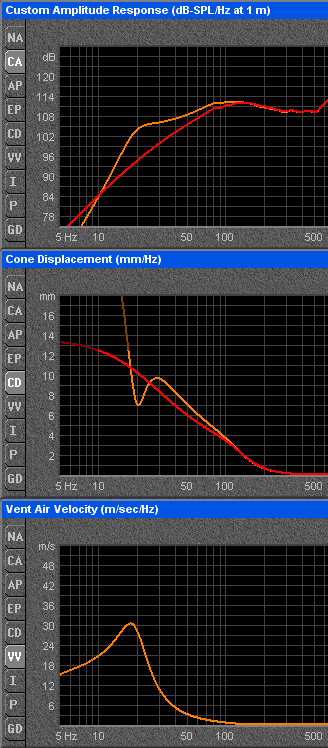Hi Prof - yeah; Andrew hit the nail on the head with his reply.
I must admit I've never experimented with sticking stuff in my ports (so to speak
) so I'm not totally sure what the effect of partially blocking a port would be. If it has the same effect as reducing the diameter of the port, then that would lower the port tuning frequency, which would actually bring the response closer to a sealed box.
Here's a quick example of what happens in a ported enclosure (vs sealed):
Take all of the above with a pinch of salt - it's just an example, and the driver I've used in the model isn't really suited to porting. That said...
The top image shows the low frequency response of a sealed system (red) and a ported (orange). Note how there's more bass around the 20Hz tuning frequency in the ported version, but that the response drops off much faster than the sealed.
The second image shows the displacement of the driver. Note the reduction around the tuning frequency for the ported version. Whilst this isn't a particularly good example, you can see how it would be possible (with a better tuning) to get more low end bass from a ported system, before you run out of excursion.
The third pic shows the speed of the air moving in the port; which increases around the tuning frequency. Port noise can be a problem when the speed of the air is too high. One of the things that increases the air velocity is having a thinner port tube - therefore I do wonder if some of the stuffing ideas may increase the air speed as a result (and thus may create unwanted noise). Well, at least until your floorstander rejects your choice of blockage, and becomes a sock cannon...
the record spot:And washed. Removes, er, colouration apparently.
*LOL* The washing power analogy is not lost on me. Ever notice that, just like washing power, sticking some new gear in your setup makes everything magically better... so... by definition... wasn't the last lot any good?


